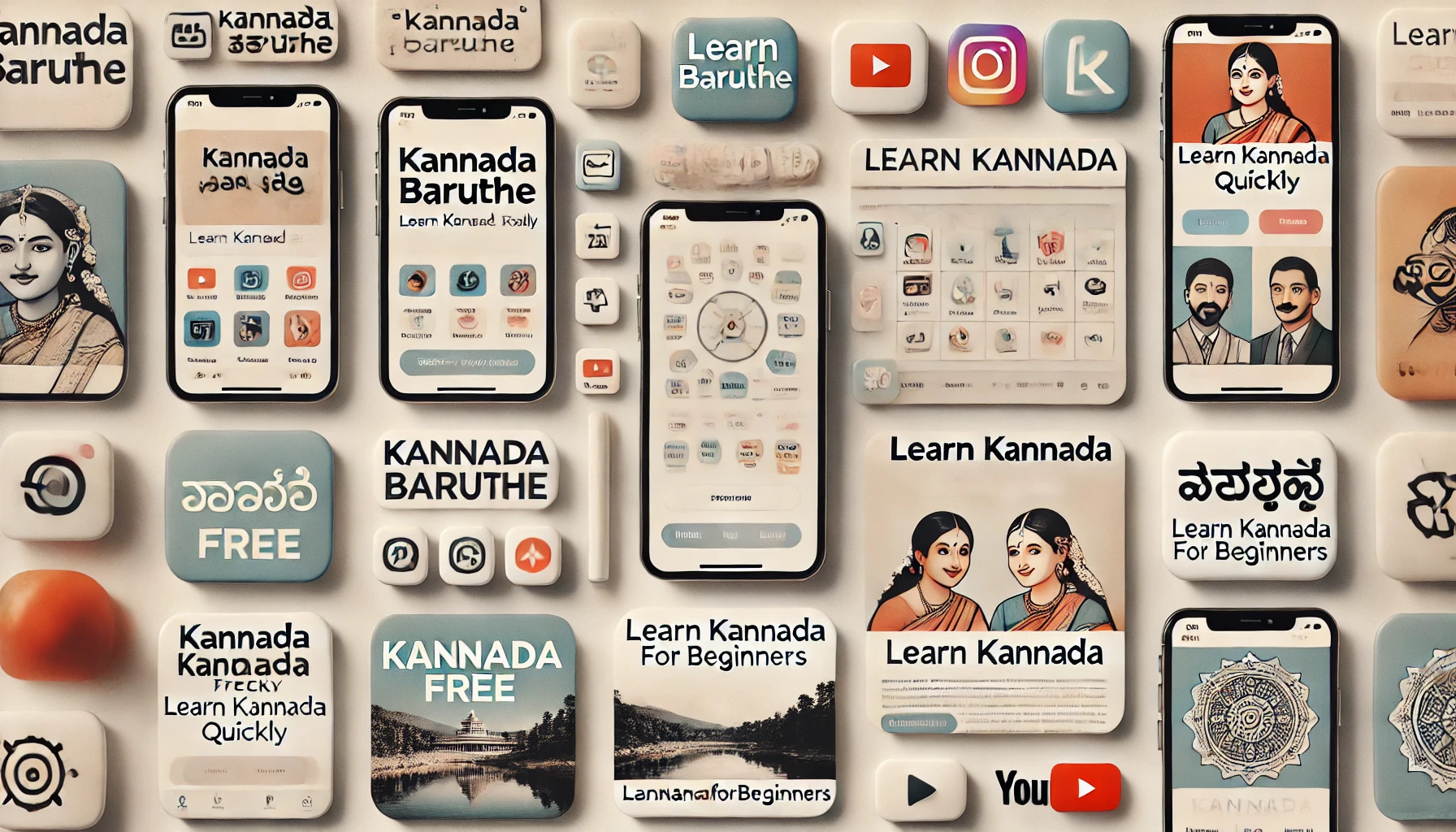As Bengaluru's linguistic landscape evolves, apps and content creators are helping non-locals learn Kannada amid an ongoing language debate
Published Jan 07, 2025 | 3:00 PM ⚊ Updated Mar 05, 2025 | 4:19 PM

Apps and websites helping outsiders in Bengaluru learn Kannada.
Bengaluru, often hailed as India’s Silicon Valley, is a melting pot of cultures, languages and people from all corners of the country. However, one of the most significant challenges for outsiders settling in the city, is overcoming the language barrier.
Kannada, the state’s official language, is widely spoken. But for many newcomers, especially those from other parts of India, it remains an unfamiliar tongue.
In recent years, the demand for learning Kannada has surged, driven by the need to connect with locals, engage in work environments, and navigate day-to-day activities in Bengaluru.
Fortunately, a number of apps, websites, and content creators have stepped in to fill this gap, offering accessible, engaging, and effective resources to help outsiders learn the language.
One of the most popular resources for learning Kannada is Kannada Baruthe, which has garnered over 1 million downloads on the Google Play Store.
Designed for beginners, the app offers short, interactive lessons that cater to learners looking for practical conversational skills.
The app’s simplicity and user-friendly interface have made it a favourite among tech-savvy young professionals in Bengaluru.
It also provides audio lessons, helping users get familiar with the language’s pronunciation.
For those seeking a more comprehensive experience, Learn Kannada Quickly has amassed over 500,000 downloads. This app combines text, audio lessons, and quizzes to cover vocabulary, grammar, and pronunciation.
The app’s 4.6-star rating on the Google Play Store speaks to its high user satisfaction and success in helping beginners get acquainted with the basics of Kannada.
Similarly, Learn Kannada Free, with over 1 million downloads, is another go-to app for learners. It offers both text-based lessons and flashcards, with quizzes and pronunciation practice to reinforce key concepts.
Its ease of use and practical approach make it a favourite among newcomers to the language.
In addition to apps, a growing number of YouTube channels and Instagram pages dedicated to teaching Kannada have made a significant impact.
One standout YouTube channel, Kannada Kali, has attracted over 100,000 subscribers. Known for its interactive lessons, the channel provides videos covering grammar, vocabulary, and cultural insights, making it a valuable resource for beginners.
The channel’s engaging content receives 5,000 to 10,000 views per lesson, with active discussions in the comments section. The host, who is a native Kannada speaker, adds a personal touch by explaining cultural nuances alongside the language lessons.
Another standout creator, Shashi’s Pathshala, uses a more interactive approach by encouraging viewers to participate in the learning process through quizzes and exercises.
These creators are often praised for making the language more approachable and less intimidating for newcomers. With 26,000 subscribers, her channel appeals to both beginners and intermediate learners, with videos averaging 2,000 to 5,000 views each.
“I started learning Kannada to integrate better into the community and my workplace,” says Ramesh, a software engineer who moved to Bengaluru five years ago.
“I found YouTube channels incredibly helpful—they break things down in a simple way. I can now speak confidently in basic situations, like ordering food or chatting with neighbours.”
Similarly, Sakshi, a marketing professional, credits Instagram pages like @chummatalks for helping her pick up conversational Kannada.
“The posts are visually appealing, and the content is digestible. I use them to learn a new word or phrase every day. It’s the perfect supplement to my app-based lessons.”
While many outsiders have embraced learning Kannada, the state’s language debate continues to stir emotions. On one side, there are those who argue that promoting Kannada is essential for preserving the state’s culture and identity.
Supporters of Kannada argue that learning the language should be mandatory, especially for those living in the city for extended periods, as it fosters deeper connections with locals and creates a more inclusive society.
On the other side, critics point out that Bengaluru’s cosmopolitan nature should allow for multilingualism, where people are free to use the language that suits them best.
They argue that forcing newcomers to learn Kannada can alienate people and create unnecessary barriers.
The state’s language policies, particularly regarding the use of Kannada in government offices, workplaces, and public spaces, are often at the centre of this debate.
The government has introduced several initiatives to encourage the use of Kannada, including official language promotion programs and campaigns, but there is still considerable resistance from certain quarters.
“I believe Kannada is important, but it should not be imposed on people,” says Ananya, a resident of Bengaluru, originally from Delhi.
“Learning the language has helped me feel more connected to the city, but I don’t think it should be mandatory for everyone. We should embrace multilingualism as it reflects Bengaluru’s diverse population,” she says.
As Bengaluru continues to evolve into a global hub, the demand for learning Kannada will likely only increase.
Apps, websites, and content creators are playing a key role in helping outsiders bridge the linguistic gap, and their impact will be crucial in shaping the future of the city’s language landscape.
However, the ongoing language debate remains unresolved. While digital solutions make learning Kannada easier and more accessible, the question of how to balance linguistic preservation with inclusivity will continue to shape conversations in the years to come.
In the end, perhaps the best solution lies in finding common ground—encouraging newcomers to learn Kannada while embracing the city’s rich tapestry of languages, allowing for a harmonious coexistence of both.
(Edited by Ananya Rao)
